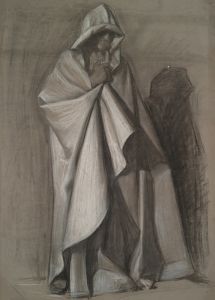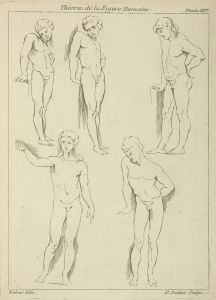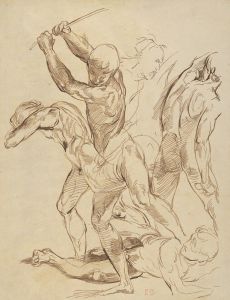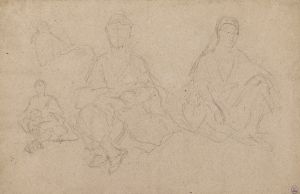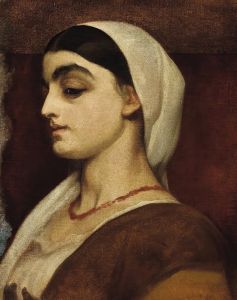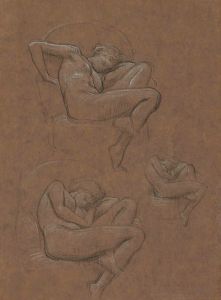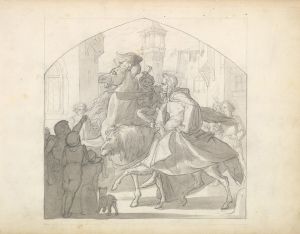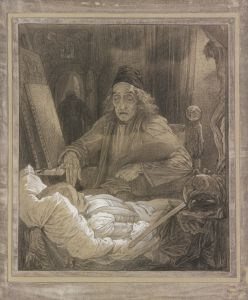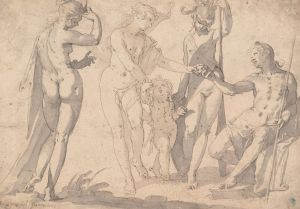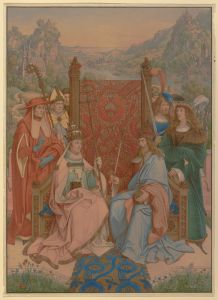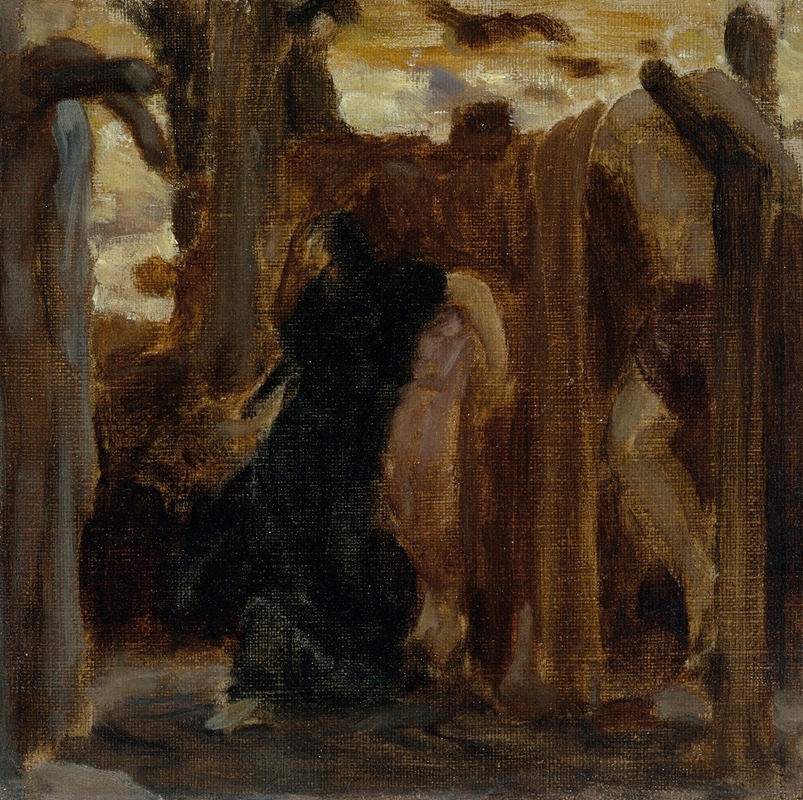
Rizpah, a colour sketch
A hand-painted replica of Frederic Leighton’s masterpiece Rizpah, a colour sketch, meticulously crafted by professional artists to capture the true essence of the original. Each piece is created with museum-quality canvas and rare mineral pigments, carefully painted by experienced artists with delicate brushstrokes and rich, layered colors to perfectly recreate the texture of the original artwork. Unlike machine-printed reproductions, this hand-painted version brings the painting to life, infused with the artist’s emotions and skill in every stroke. Whether for personal collection or home decoration, it instantly elevates the artistic atmosphere of any space.
"Rizpah, a colour sketch by Frederic Leighton" is a notable work by the esteemed British artist Frederic Leighton, 1st Baron Leighton (1830–1896). Leighton was a prominent figure in the Victorian art world, known for his association with the Pre-Raphaelite Brotherhood and his contributions to the Aesthetic Movement. His works often depicted classical themes and were characterized by their attention to detail, vibrant colors, and a strong sense of composition.
The sketch "Rizpah" is based on a biblical story from the Old Testament, specifically from the Second Book of Samuel. Rizpah was the concubine of King Saul, and her story is one of tragedy and maternal devotion. After the death of Saul, Rizpah's two sons were handed over to the Gibeonites and executed as part of a blood recompense. Rizpah's act of mourning, where she protected the bodies of her sons from scavengers until they were properly buried, is a poignant narrative of grief and resilience.
Leighton's interpretation of Rizpah captures the emotional depth of this story. Although primarily known for his large-scale paintings, Leighton often created sketches and studies that showcased his mastery of form and color. These sketches were not merely preparatory works but were valued for their artistic merit and insight into Leighton's creative process.
In "Rizpah," Leighton employs a rich palette to convey the somber mood of the scene. The use of color in the sketch is particularly noteworthy, as it reflects Leighton's skill in using hues to evoke emotion and atmosphere. The composition likely focuses on Rizpah's figure, emphasizing her sorrow and determination, although the exact details of the sketch's composition are not widely documented.
Leighton's work often drew inspiration from classical and biblical themes, and "Rizpah" fits within this context. His ability to infuse historical and mythological subjects with human emotion made his art resonate with contemporary audiences and continues to be appreciated today.
The significance of "Rizpah" lies not only in its artistic execution but also in its reflection of Victorian attitudes towards biblical narratives and the exploration of human emotion. Leighton's works, including this sketch, were part of a broader movement in 19th-century art that sought to elevate the moral and aesthetic standards of society through the depiction of noble themes.
While "Rizpah" as a color sketch may not be as widely recognized as some of Leighton's larger works, it remains an important piece within his oeuvre. It exemplifies his dedication to capturing the essence of his subjects and his ability to convey complex emotions through his art.
Frederic Leighton's legacy as a leading figure in Victorian art is well-established, and works like "Rizpah" contribute to our understanding of his artistic vision and the cultural context of his time. His influence extended beyond his paintings, as he served as the president of the Royal Academy of Arts from 1878 until his death in 1896, shaping the direction of British art during a pivotal period.





